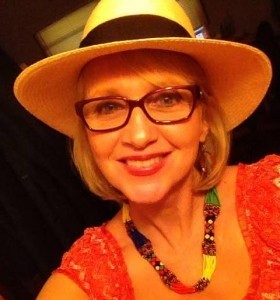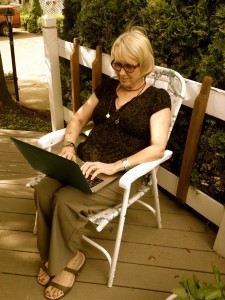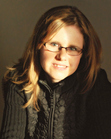Writer Interview: Sonja Mongar
Creative nonfiction and, more recently, fiction writer Sonja Mongar, is responsible for a good chunk of my growth and path as a writer. A mentor in Western Connecticut State University’s Creative and Professional Writing MFA program, she once challenged me to keep a semester-long journal called “Why I Write.” That project culminated in a final essay on the subject, a sort of manifesto that has become my rudder, guiding my pursuit as a writer ever since. A modified version of that essay, “Artmaking,” appeared in Writer’s Digest in 2012. Sonja’s insight and wisdom into a life of art making is my Tuesday treat to you.
“Artist / Writer Interviews” spotlight working artists and writers – the spaces in which they work, where they find their inspiration, what makes them unique. I feature one artist or writer each month. If you are a working artist or writer who would like to be considered for this series, or if you want to recommend an artist or writer to interview for this series, please contact me.
1) Where (in what state) do you write?
Currently, I write in Spokane, Wash. I just moved to Washington State from Puerto Rico, where I lived for the last 13 years and worked as a professor of English teaching creative writing. I left a tenured teaching position to go back to my writing full time.
2) Do you find that place – your geographic surroundings – influences your writing?v

Sonja Mongar. Photo courtesy of Sonja Mongar.
Being a writer means always being aware and observant, so wherever I am, place becomes a part of what I write and shapes me. I have lived in so many different geographies/places: the Great Plains, the Bitterroot and Cascade mountains, the Columbia River Basin, along an Oregon river, near a North Atlantic seashore, in an urban Italian neighborhood in Queens, on a 1950s Midwest college campus, beside the railroad tracks in wheat country, in the subtropical Atlantic with its sugary beaches and on a Caribbean island. Each place has its unique landscape, culture, dialect and mood which have made their mark on both my identity and my imagination.
3) Describe your writing space. How did it come into being, and why is it significant?
Because my lifestyle has been so mobile, my writing space for the past 20 years has had to be wherever I could set my laptop. Right now, I’m settled in my mother’s sewing room with an iMac desktop while I make my transition into life in my new hometown. But I find I cannot concentrate when I am “home,” partly because computers have their own virtual geography. My iMac’s geography is business, teaching, researching, web designing, editing, socializing and even shopping! I recently transferred my current work-in-progress to a new laptop, a laptop on which I do nothing but write. Some of my best writing happens when I can take my laptop and find a cozy corner of a quiet coffee house or a breakfast cafe. Something about the clash of dishes, smell of coffee and the sizzle of the grill transports me.
4) When do you do your writing?
I’m more productive when the sun goes down. Again it’s probably about shutting out distractions. I dislike turning off my story once I start, thus evening offers a huge block of uninterrupted time. If I am able to write all night, generally I don’t stop. Then I sleep. Then I write. It’s like a marathon.
But all-night writing is not always practical. So recently I have been experimenting with Julia Cameron’s (The Artist’s Way) three-pages-a-day method. At three pages a day, 30 days of writing 90 pages of work. The idea is captivating, but the three pages a day is so far not working well for me. If I fail to write the three pages, I beat myself up because I’m not disciplined enough. It is, however, forcing me into a routine and keeping my story and characters in the forefront on a daily basis. Whether I write all night and day for a week or squeeze in three pages every few days, I am realizing the only thing I have to be diligent with is to believe in myself and my writing. The rest will follow.
5) Where do you find inspiration for what you write?
I write about what I know, but I don’t let what I know limit my interests or my imagination.
I have always found real people’s stories so much more interesting than stories I invent. One look around me at any given time reveals the richest stories and most engaging characters are sitting next to me on the bus or talking to me in my mother’s kitchen. I love to live vicariously through these people and their stories.
I am planning trip by train from Spokane to Chicago to see my grandson graduate from Navy school. On the way I pass through Red Wing, Minn., where my current protagonist grew up. I am anxious to capture some significant and authentic details of place and characters in Red Wing.
6) Why do you write?

Photo courtesy of Sonja Mongar.
“The role of the writer is not to say what we can all say, but what we are unable to say.” -Anais Nin
I write to express the magic in everyday stories and people. I want to be a voice for the voiceless. I want the reader to hear the music, marvel at the art, be inspired by the people and feel a universal sense of empathy and connection; community.
I write because I want to make sense of and give meaning to those fragments that comprise my life. I write to find peace and to perhaps connect to others who share a commonalty with my narrative.
I write to imagine and invent even more. It’s fun and somehow therapeutic. Aristotle said, “Art is therapy.”
It took a long time for me to come around as a writer. I raised a two kids, attended marriage counseling, survived the day-to-day. When I went back to school, I majored in photography. But I saw all these really sharp, young student photographers in my classes, and I felt way out of their league. So I switched to journalism. In my magazine feature writing course, I was the first one to get published. It wasn’t long before I was writing for local publications and I found a niche with features, especially arts, music and profiles.
But writing features for local publications didn’t pay well. So I took a job at a drug rehab treatment center. I barely lasted six months. I kept a diary of the terrifying and heartbreaking real life stories I heard and my daily struggles over the hypocrisy and corruption of the institution. I wanted to write the stories but I felt I needed more than journalism skills to pull it off. I applied to a Creative Writing Masters program and used my diary as my portfolio. Little did I know that majoring in creative nonfiction meant I had to write – not my former clients’ stories – but my own. And that’s where the floodgates opened and my words, my voice came pouring out.
7) What are you working on right now? How did the project come to you, and why is it important?
Creative nonfiction, memoir and life narrative have been the subjects of my research and what I have considered my life’s work for decades. But I never satisfactorily finished the memoir of my brief stint working at the rehab center. For the last 20 years, the project would not leave me alone. So I put one of my philosophies to the test: to allow the story and the characters/subjects to choose the structure of their narratives and their points of view. Even still, the story felt like Marley’s chains in Dickens’ Christmas Carol hanging around my neck; rather than freeing and a way to reach peace, the story felt like something I would have to drag around for the rest of my life.
So, I decided to try writing it as fiction. Was it my pride perhaps that was getting in the way of telling the story as nonfiction? Or that journalistic commitment to truth? Hemingway writes in his memoir, A Moveable Feast: “… All you have to do is write one true sentence. Write the truest sentence you know.”
The truth was in the fiction. It opened the story up in ways I never fathomed. Every page is a new discovery.
8) What is one of the most important lessons you have learned through the writing process?
The most import aspect of the writing process is to understand the art is in the making. Not in the book sitting in Barnes & Noble or Amazon.com. Not in the check from the publisher. Not in the reading out loud to groups of people. It’s in the creative process.
9) How do you balance time to write with other facets of life that demand attention?
I don’t think there ever exists a balance between writing and the rest of one’s life. When I write, everything else disappears. Dishes and laundry pile up. Meals don’t get cooked. Sometimes I don’t even get dressed; I write in my pajamas.
My kids are grown. They launched well and don’t need me hovering. I have four grandkids between ages 3 and 21 living in four different states, and I’ve been as involved in their lives as I can. I’m not married anymore. I’m semi-retired from my full time teaching career. When I finally do get my own place, it will be a small apartment with low maintenance. I don’t own a lot of things. I’ve cleared out a lot of space to write. White space.
10) Who is your favorite author? Why? How were you first exposed to this writer?
Mary Clearman Blew. She’s a Montanan and a memoirist like me. I learned about place as character from her work. Every detail she rendered resonated in my own story. I clearly saw the empty frontier landscape of my ancestors and the one I knew as a child as one that lived in my own soul. Now that’s writing.
11) Do you find that seasons inform your work?
I’ve been season deprived for over half of my adult life from living in the sub-tropics and tropics. This year was my first spring in the north since 1982. The flood of senses: colors, scents, sounds, temperatures. At the same time my synapses fired with memories connected to these sensations. It was like watching a very fast slide show. The emotions associated with the memories were overwhelming. But it reminded me how the senses play such a huge role in writing.
12) Who have been some of your biggest influences?
In the creative nonfiction realm, I am blown away by Joan Didion, Norma Cantu, Mary Carr, Patricia Hampl, Gloria Anzaldua, Joann Beard, Virginia Woolf, Zora Neale Hurston, Mary Clearman Blew, and Anais Nin. But literary movements have also had a huge influence on my writing and taught me so much about story. Additionally, I trained in improv storytelling theater. There was something about seeing peoples’ stories acted out on stage that gave another whole dynamic to my concept of story. So I am inspired by screenplay writers/filmmakers like David Lynch, Coen Brothers, Quentin Tarrantino, and Lars Von Trier. Music, art, photography all have narratives too. I think it’s really important to sample a range of genres and modes as a writer and keep myself open to all the possibilities of story.
Learn more about Sonja Mongar’s work HERE:
http://www.saguache.org/towns/bonanza/index.html#Etta (link to part of an auto ethnography about her great-great grandmother)



